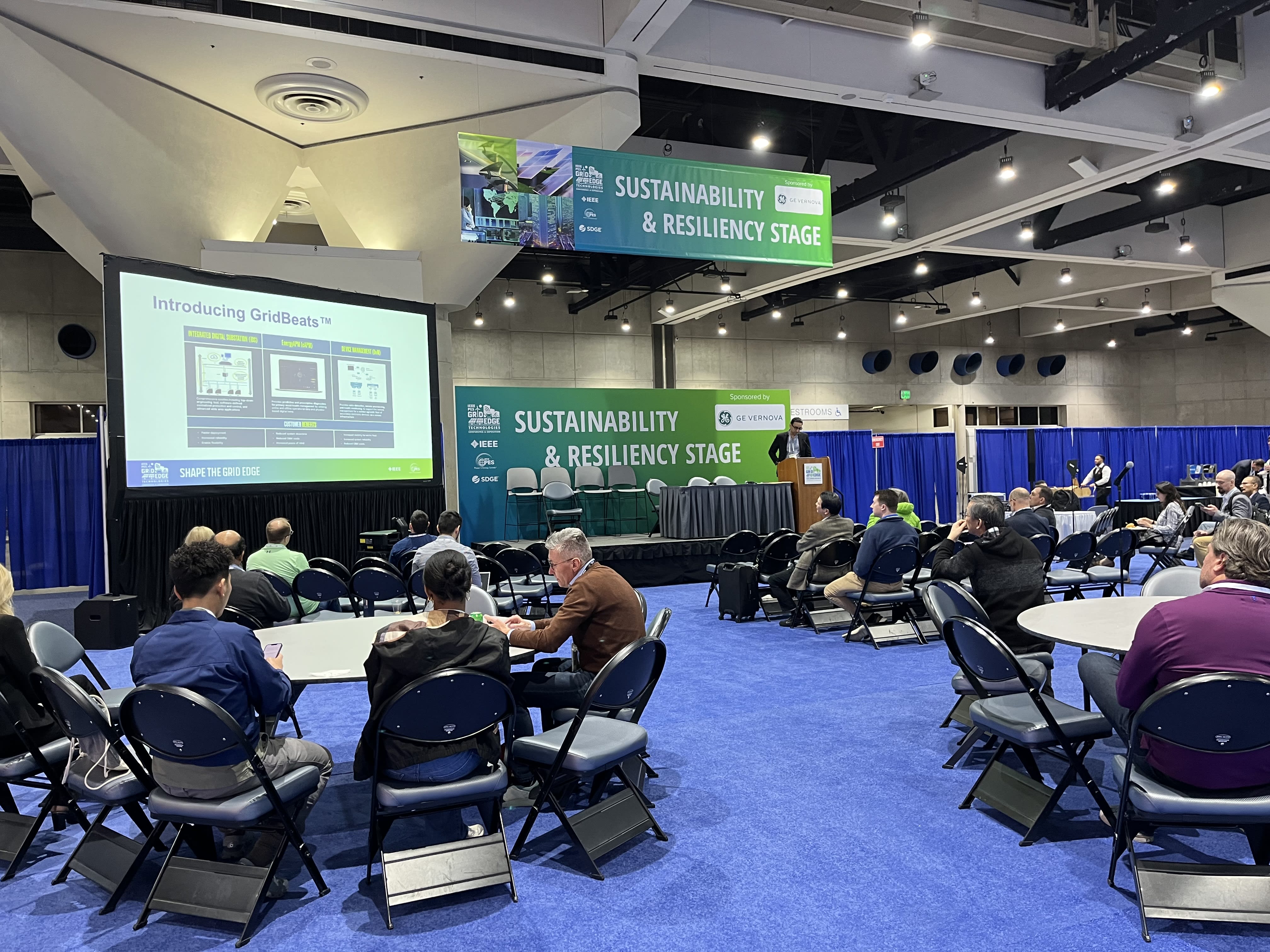Powering Up The Grid with Software-Defined Solutions
I recently had the privilege of attending and speaking at the IEEE PES Grid Edge Conference in San Diego. One of the most prominent topics dominating discussions – both at the conference and in the energy sector at large – is digitalization.
We’re witnessing a fundamental shift in how decisions are made and how actions are taken within grid networks. The industry is moving away from a world where everything was operator-driven and toward one where automation and AI are taking a leading role. Take the automotive industry, for example: in the past, you had to remember to get your oil changed. Now, your car alerts you when it’s time for service (in addition to the email reminder you typically get from the dealership). The power industry is going through a similar transformation, shifting from human-centric operations to AI-assisted decision-making. And frankly, it’s long overdue.

Why the Grid Can’t Stay in the Past
The grid has been evolving, but it has traditionally been a cautious process. Decades ago, we relied on mechanical relays to control power flows. Then came semiconductor-based relays, adding intelligence to the system. However, despite these advancements, the industry is taking a measured and careful approach.
Now, however, a perfect storm is forcing change. We are witnessing both load demand challenges while also having generation challenges, and many factors are at play:
1. The Energy Transition: We’re integrating variable renewable energy sources (solar, wind, etc.), which present unique challenges like the loss of grid inertia that traditional power plants provided. Operators must react faster than ever to maintain stability and prevent blackouts. Simultaneously, loads started to evolve as well, meaning we have two major transitions happening in parallel.
2. Electrification and Evolving Demand: AI and electrification are reshaping energy consumption. The AI Revolution, so to speak, cannot exist without the energy spectrum that it relies so heavily on. Data centers alone consume hundreds of megawatts – sometimes gigawatts – of electricity, and AI-driven applications like ChatGPT use 25 times more energy than Google searches (per, ironically, Google). Meanwhile, consumers are also becoming prosumers, feeding power back into the grid, and more end-users are using electric power as opposed to traditional gas power.
3. Aging Infrastructure: Much of our grid infrastructure is 60-70 years old and thus approaching end-of-life. We need smarter ways to monitor asset health and predict failures before they happen.
Software-defined automation solutions have entered the chat.
Augmenting the Grid with AI
Both in reel and real life, we’re seeing a rise in themes of futuristic AI, robotics, and use of intelligent machines that complement the human essence and enhance human capabilities. That’s exactly what the grid needs. We need to harmonize the grid with AI and automation, for faster and smarter decision-making and action.
At GE Vernova, we’re already putting this vision into practice with our GridBeats™ portfolio. A few solutions within include iDS (Integrated Digital Substation), which accelerates substation deployment, making infrastructure upgrades more efficient. The pinnacle of this software-defined world and the icing on the cake of our GridBeats™ portfolio is ZAC (Zonal Autonomous Control), where we’re moving to decentralization and more efficient decision-making. Decisions need to be moved closer to where the problem is for better decisioning, creating operational efficiency.
The transition from automated to autonomous systems can be synonymous. Automation is still operator-driven, where you set up an algorithm, but autonomy means real-time decision-making based on multiple variables – weather, asset health, congestion, and more. The key to get to the autonomous state is not only to predict the state, but also prescribe actions. AI can predict problems and prescribe solutions, making grid operations more efficient.
But, these systems still need a human inside. AI should enhance decision-making, not replace it entirely.
The Challenges of an AI-Driven Grid
But of course, with any opportunity there is potential pushback, and we would be remiss not to take it into deep consideration. Some of the pertinent ones that come to mind are:
1. Cybersecurity Risks: The more digital and software-driven the grid becomes, the larger the attack surface for cyber threats. Utilities must adopt zero-trust principles from the design stage to ensure resilience.
2. Data Privacy Concerns: Who owns the data? Where is it stored? How secure is it in the Cloud? Where does the Cloud reside? These are valid concerns that need to be addressed transparently.
3. Trust in Autonomous Decisions: Yes, even AI can make mistakes. Operators need to maintain oversight and have the ability to intervene when necessary. This is why a hybrid approach of AI plus human expertise is the best path forward.
A Pivotal Moment for the Grid
The energy sector is at a crossroads. The challenges we’re facing are too fast-moving and complex for traditional, operator-driven methods. It’s time to suit up - to equip our grid with the intelligence and automation it needs to handle the future.
The energy industry must embrace AI, automation, and collaboration to build a more resilient, adaptive grid.
The future is here. Let’s power it the right way.